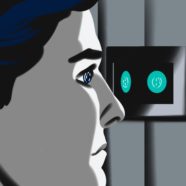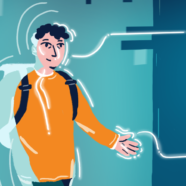- #all
- #banking
- #biometrics
- #business
- #culture
- #digital identity
- #elections
- #ethics
- #facial recognition
- #fingerprint recognition
- #government
- #iris recognition
- #NIST
- #onboarding
- #online elections
- #technology
- #trust
- #UX
- #voice recognition

The Future of Green Buildings Is Biometric: Here’s Why
As the industry moves beyond passive design and materials, the focus is shifting to how buildings can intelligently respond to their occupants.

The HQ Effect: Why Next-Gen Headquarters Seed Urban Ecosystems
If a building can behave like good urban code, the city evolves and everyone benefits.

When Sci-Fi Movies Predicted the Smart Buildings of Today
What once seemed like cinematic imagination is now shaping the very spaces we live and work in.

What If a Building Could Think? Envisioning the Future of Biometric Architecture
By integrating biometric technology as a core nervous system, buildings are beginning to develop a form of intent.

How Tech Companies Are Quietly Becoming the World’s Most Influential Architects
The most influential architects in the world don’t stamp drawings; they ship product roadmaps.

From Turnstiles to Trust: Access Control’s Identity-First Reinvention
As buildings move beyond badges and PINs to on-device matching, this piece anchored in Innovatrics’ upcoming headquarters sets out the zero-touch, privacy-by-design model, NIST-evaluated performance, and the integration playbook for an identity layer that runs the building.

How eKYC can make sharing economy apps safer
Mandatory in highly regulated fields like banking and communications, the Know Your Customer (KYC) process is a crucial part of onboarding for many companies. But would it also enhance trust on sharing economy platforms? We explore how electronic KYC that uses biometrics would make it easy, effortless and safe for both platforms and users.

Digital anthropologist Giles Crouch: “We use verifiable identities in the real world, it should be the same in the digital one.”
A Identity is a fuzzy thing. It is constantly changing as we grow up: child, student, parent, worker… each time we join different social groups in our lives, we find ourselves with a new kind of identity. And with technology, identity is no longer restricted to the offline world. So what does it mean, to have a digital identity? And why do we need to have a system to verify it? about culture, technology and identities – real and digital ones.

Verified social media: How can biometrics tame hate, hoaxes and fraud caused by anonymity?
Today's easy anonymity on social media creates an open avenue for scammers, cheaters and bots. Could biometric verification be the way to make these platforms friendlier and more “social” again? We explore the topic with Ján Lunter, CEO of Innovatrics, who thinks biometrics is key to social media security and safety.

Five threats in sharing economy apps and how biometrics could help fight back
Sharing economy platforms such as Uber or Airbnb should always have control over who is using the platform and how. However, in some cases, fraudsters and criminals are able to take advantage of sharing economy services and put the safety of users and the reputation of the platforms at serious risk. Read about five threats and scams that have occurred on sharing economy platforms and how the use of biometric technology could have prevented them.








